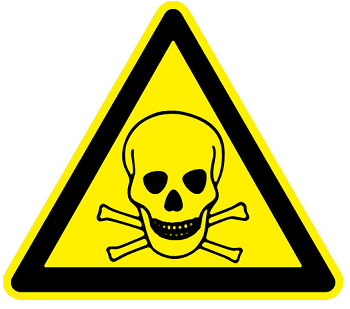Styrene is a chemical raw material, mainly used in home decoration and leather production. It is highly toxic and very harmful to the human body. Its toxicity is reflected directly and indirectly. The direct one is In acute poisoning, the toxic substances will cause strong irritation to the patient’s mucosa, and may even lead to serious situations such as poisoning and fainting. Indirect poisoning refers to chronic poisoning, which is also very harmful and has strong carcinogenicity.
Toxicity
Acute toxicity: LD50: 5000 mg/kg (rat oral); LC50: 34.5 g/m3, 2 h (mouse inhalation). LC50: 26.0 g/m3, 4 h (rat inhalation). When humans inhale 3500 mg/m3×4 h, the acute effects are mainly irritation to the eyes, skin, mucous membranes and respiratory tract, and can cause anesthesia at high concentrations. Obvious irritation symptoms include confusion, lethargy, ataxia, fatigue, and fatigue; when inhaled at 920 mg/m3×20 min, upper respiratory tract mucosa is irritated.
Subacute and chronic toxicity: When humans inhale 50 to 600 ppm x 3 years and 1 month, headache, dizziness, polyneuritis, mild visual field narrowing, and low nerve conduction velocity will occur; when humans inhale 40 to 130 ppm x 2 Years of headaches, fatigue, 72% brain wave abnormalities, and central nervous system disorders. Chronic effects may be mildly damaging to the blood and liver. Animals developed symptoms of eye and nose irritation when exposed to 6.3~9.3 g/m3, 7 h/d, 6~12 months, 130~264 times.

In the “Ecological Textile Standard 100”, the limit value of styrene in fabrics is 0.005 mg/kg (decorative materials and infants and young children). The toxicity of styrene is similar to benzene, but lower than that of benzene, and its irritating effect is slightly higher than that of benzene. Humans are relatively sensitive to the toxicity of styrene. At 920 mg/m3, respiratory tract and skin irritation, dizziness, headache, etc. can occur within 20 minutes. At high concentrations, there are obvious symptoms of irritation, confusion, listlessness, fatigue, and fatigue.
The chemical structure of styrene and its metabolism in animals are similar to those of vinyl chloride. Although there is currently no evidence that styrene is directly carcinogenic, its carcinogenic, teratogenic and mutagenic properties cannot be ignored. In addition to poisoning the nervous system, styrene also affects the digestive system, often causing symptoms such as bloating, anorexia, and nausea. The incidence of liver and gallbladder diseases increases, and the detoxification function of the liver is impaired. In terms of blood, there are slight blood changes, such as mild leukopenia, relative increase in lymphocytes, thrombocytopenia and reticulocytes. In the event of acute poisoning, you must leave the scene quickly and take oxygen if necessary. People with nervous system or blood system should not engage in work that comes into contact with styrene.
Symptoms of poisoning
What are the symptoms of styrene poisoning: When the concentration is high, it will immediately affect the eyes and upper respiratory tract mucous membranes, causing eye pain, tears, runny nose, sore throat, cough, etc., as well as headache, dizziness, nausea, vomiting, and systemic symptoms. Fatigue and other symptoms, if severe, will cause fainting and staggering gait. Eyes can be burned when contaminated with styrene. Effects of slow styrene poisoning: Common symptoms include neurasthenia, headache, fatigue, and nausea. Loss of appetite, bloating, depression, forgetfulness, finger tremors, etc., have an impact on the respiratory tract. If this continues for a long time, it will lead to obstructive pulmonary disease, rough skin, chapped skin, etc.
Metabolism: This product can be absorbed through the respiratory tract, skin and gastrointestinal tract. After absorption of this product, the content in the brain, liver, kidney, perirenal fat tissue and spleen is higher than that in other tissues; styrene does not accumulate in humans and animals. Many test results show that styrene is rapidly metabolized in animals. After humans inhale styrene, about 60% is absorbed. Most of it is converted into phenylglycolic acid (mandelic acid) in the body, and a small amount is converted into benzoic acid and further interacts with the human body. The glycine combines into hippuric acid, both of which can be quickly excreted in the urine.
Whether it is in life or work, we must avoid contact with styrene. If we do come into contact, we must take protective measures. In addition, if we decorate our homes, we must use environmentally friendly decoration materials and take good care of the living room. Regular ventilation is required to avoid being harmed by such polluted gases, especially for young children. The cause of leukemia in many young children is some harmful chemical substances in decoration.

 微信扫一扫打赏
微信扫一扫打赏

